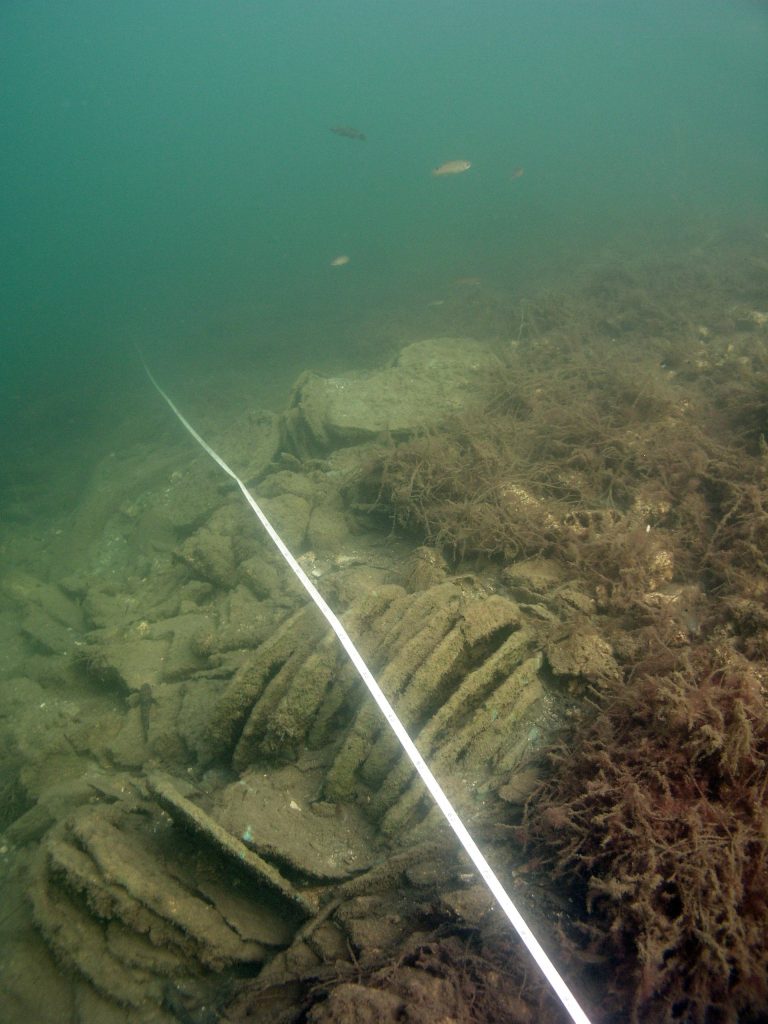The cargo of the Skaftö wreck reveals the story of 15th-century trade routes.
According to recent research from the University of Gothenburg, the Skaftö wreck picked up goods at Gdańsk, Poland, and was traveling towards Belgium when it sank in the Lysekil archipelago around 1440. Modern cargo analysis tools are now revealing completely new answers on how trade was handled throughout the Middle Ages.
“The analyses we have carried out give us a very detailed picture of the ship’s last journey and also tell us about the geographical origins of its cargo. Much of this is completely new knowledge for us,” says Staffan von Arbin, a maritime archaeologist.
It was previously unknown, for example, that calcium oxide (CaO), often known as quicklime or burnt lime, was exported from Gotland in the 15th century.

Excavation of the Skaftö wreck in 2009. Credit: Staffan von Arbin, Bohusläns museum
The Skaftö wreck was discovered at the bottom of the sea at Lysekil, north of Gothenburg, in 2003. However, researchers have only recently been able to conduct examinations of its cargo using new, modern methodologies.
An international study team led by marine archaeologist Staffan von Arbin of the University of Gothenburg has succeeded in tracing the cargo’s origins and likely route of the ship. The research adds to our understanding of the goods traded in the Middle Ages and the trade routes that existed at the time.
The cargo included copper, oak timber, quicklime, tar, bricks, and roof tiles. Previously, the Bohusläns museum collected cargo samples from the ship during underwater archaeological investigations. But it’s only now that analyses of its cargo have been possible using modern analysis methods.

Tobias Skowronek, German Mining Museum, in the process of sampling a copper ingot from the Skaftö wreck. Credit: Staffan von Arbin, University of Gothenburg
From Gotland in Sweden
With these analyses, the researchers have been able to establish that the copper was mined in two areas in what is currently Slovakia, for example. The analyses also show that the bricks, timber, and probably also the tar originated in Poland, while the quicklime is apparently from Gotland.
According to medieval sources, copper was transported from the Slovakian mining districts in the Carpathian Mountains via river systems down to the coastal town of Gdańsk (Danzig) in Poland. In the Middle Ages, Gdańsk was also the dominant port for exporting Polish oak timber.
“It is therefore very likely that it was in Gdańsk that the ship took on its cargo before it continued on what would be its final voyage.”
Heading for Belgium
The composition of the cargo indicates that the ship was on its way to a western European port when, for unknown reasons, it foundered in the Bohuslän archipelago. Here, too, the research team has drawn conclusions from historical sources.
“We believe that the ship’s final destination was Bruges in Belgium. In the 15th century, this city was a major trading hub. We also know that copper produced in Central Europe was shipped on from there to various Mediterranean ports, including Venice.”
The study presents recent investigations of the composition of the cargo. These results were then compared with other sources from the same period, archaeological as well as historical.
- Karlston
-

 1
1




Recommended Comments
There are no comments to display.
Join the conversation
You can post now and register later. If you have an account, sign in now to post with your account.
Note: Your post will require moderator approval before it will be visible.